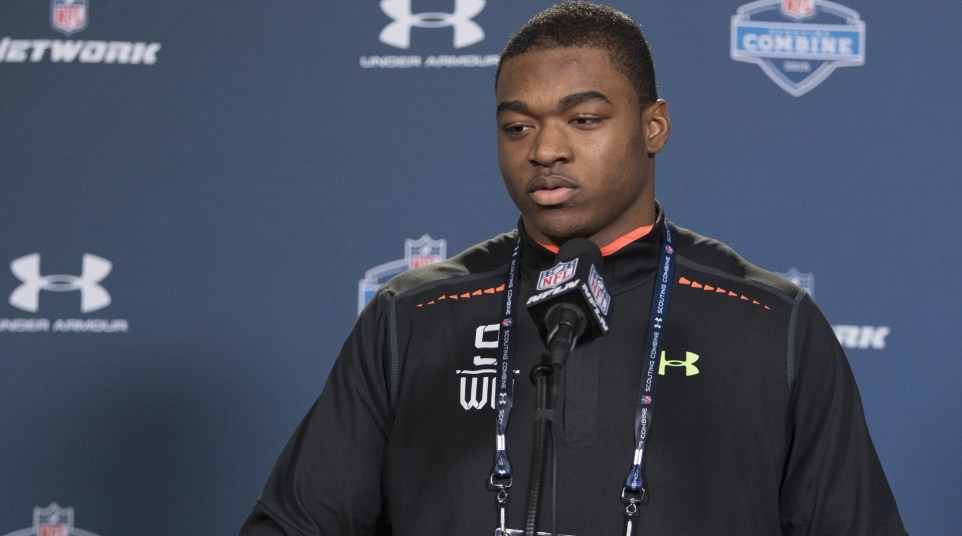Can Amari Cooper thrive in Oakland?
The Oakland Raiders, once one of the proudest franchises in the NFL, have had a rough go of it since losing Super Bowl XXXVII to the Tampa Bay Buccaneers. Since the end of the 2003 season, they haven’t posted a single winning campaign, with just two 8-8 years mixed in.
There’s a reason the team continuously picks at the top of draft, giving them an opportunity to draft elite college players like Alabama’s Amari Cooper, which they did on Thursday when they took the Biletnikoff Award winner at No. 4 overall.
On paper, Cooper fits an obvious need for the Raiders. They’ve finished in the bottom 10 in passing offense in all but two seasons since 2006, and after acquiring quarterback Derek Carr in last year’s NFL draft, Oakland needed to arm its young quarterback with receiving threats. Along with signing former San Francisco 49ers receiver Michael Crabtree, the Raiders appear to have done that.
While no one is questioning whether or not Cooper has what it takes to cut it in the NFL, it’s fair to be concerned for his fate as a Raider specifically. Oakland has consistently been one of the worst teams in the league for the last decade-plus, almost always unable to move the ball through the air.
Recent history is very much working against Cooper. The Raiders haven’t had a 1,000-yard receiver since future Hall of Famer Randy Moss did it in 2005, a nine-season drought. Crabtree has a big name, but he struggled last year in his first full season back from an Achilles’ tendon tear, while tight end Mychal Rivera only recently emerged as a solid option. Teams will likely focus on taking Cooper away as an option, especially since there’s no clear-cut leader in the Raiders’ backfield to anchor the running game.
Oakland has been through what feels like a dozen regime changes since they last chose a wideout in the first round (they’re actually on their fifth coach since then), but that pick did not work out. In 2009, the Raiders took Darrius Heyward-Bey out of Maryland, reaching for the receiver over Crabtree, who dominated in college.
This time, though, the Raiders might actually have found a fit in Cooper. While the pick is reminiscent of late owner Al Davis’ desire for speed on the outside (a reason for drafting Heyward-Bey, who ran a blistering 4.3-second 40-yard dash at the scouting combine), Cooper is a far more complete receiver than your average burner, something he proved ten times over in his record-setting college career. He also arrives in Oakland at a much better time than DHB did.
Unlike in 2009, which was when the JaMarcus Russell era was nearing its end, Oakland does seem to have a long-term solution at quarterback in Carr. By giving him Cooper, a sneakily athletic player with laser-precision route running and strong hands, and adding him to Crabtree and Rivera, Oakland has a core in place for what could develop into a solid passing game.
Related: Early draft grades for SEC first-round picks
Cooper is also considered very much a “low-risk” player, one whose floor as an NFL player is higher than most receivers drafted that high thanks to his ability to play both inside and out. After Oakland took defensive star Khalil Mack last year, another player considered to a low-risk option, the Raiders are building on solid pieces instead of boom-or-bust options like they did last decade.
While many thought the Raiders might go defense with their pick after they finished last in the league in points allowed then hired a defensive-minded coach in Jack Del Rio (Southern California defensive lineman Leonard Williams was a popular choice in mock drafts) experts have been generally positive on the Cooper selection, giving the pick grades anywhere from a “B” all the way to “A+,” a dramatic shift from where the Raiders were graded on their first-round picks just a few years ago.
Is it a new day for the Raiders? With yet another solid early pick, it appears the team could (eventually) be on its way out of the NFL basement. If Cooper can find a way to overcome the futility that’s plagued Oakland for more than a decade, he could be a catalyst for their rise.

